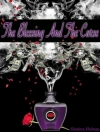L’action se situe dans le Paris de la fin du XIXe siècle, après la Commune, dans un contexte politique trouble, hésitant entre les fantômes de la première révolution, la montée du collectivisme et un modèle républicain clientéliste et conservateur.
Chéri-Bibi, ancien bagnard condamné à tort, entreprend un coup d’état destiné à assainir la République et ses institutions. Il utilise pour cela un personnage, le commandant Jacques, militaire idéaliste qui s’est illustré dans une guerre récente, et dont on apprendra, au fil de multiples rebondissements qu’il est son fils. Gaston Leroux met en scène toute une galerie de personnages haut en couleurs – la belle Sonia, les traîtres, les notables de la république, les citoyens ordinaires entraînés malgré eux, dans un contexte détonnant où tout peut arriver, et arrive.
À la fois roman d’aventures et politique, nous sommes entraînés dans un tourbillon d’événements, une déclinaison de traîtrises, d’actions héroïques, d’histoires d’amour et d’idéaux. Une description saisissante du Paris de la fin du XIXe siècle, et des couches de la population qui s’y croisent.
A propos de l’auteur
Gaston Louis Alfred Leroux was a French journalist and author of detective fiction.
In the English-speaking world, he is best known for writing the novel The Phantom of the Opera (Le Fantôme de l’Opéra, 1910), which has been made into several film and stage productions of the same name, such as the 1925 film starring Lon Chaney, and Andrew Lloyd Webber’s 1986 musical. It was also the basis of the 1990 novel Phantom by Susan Kay.
Leroux went to school in Normandy and studied law in Paris, graduating in 1889. He inherited millions of francs and lived wildly until he nearly reached bankruptcy. Then in 1890, he began working as a court reporter and theater critic for L’Écho de Paris. His most important journalism came when he began working as an international correspondent for the Paris newspaper Le Matin. In 1905 he was present at and covered the Russian Revolution. Another case he was present at involved the investigation and deep coverage of an opera house in Paris, later to become a ballet house. The basement consisted of a cell that held prisoners in the Paris Commune, which were the rulers of Paris through much of the Franco-Prussian war.












